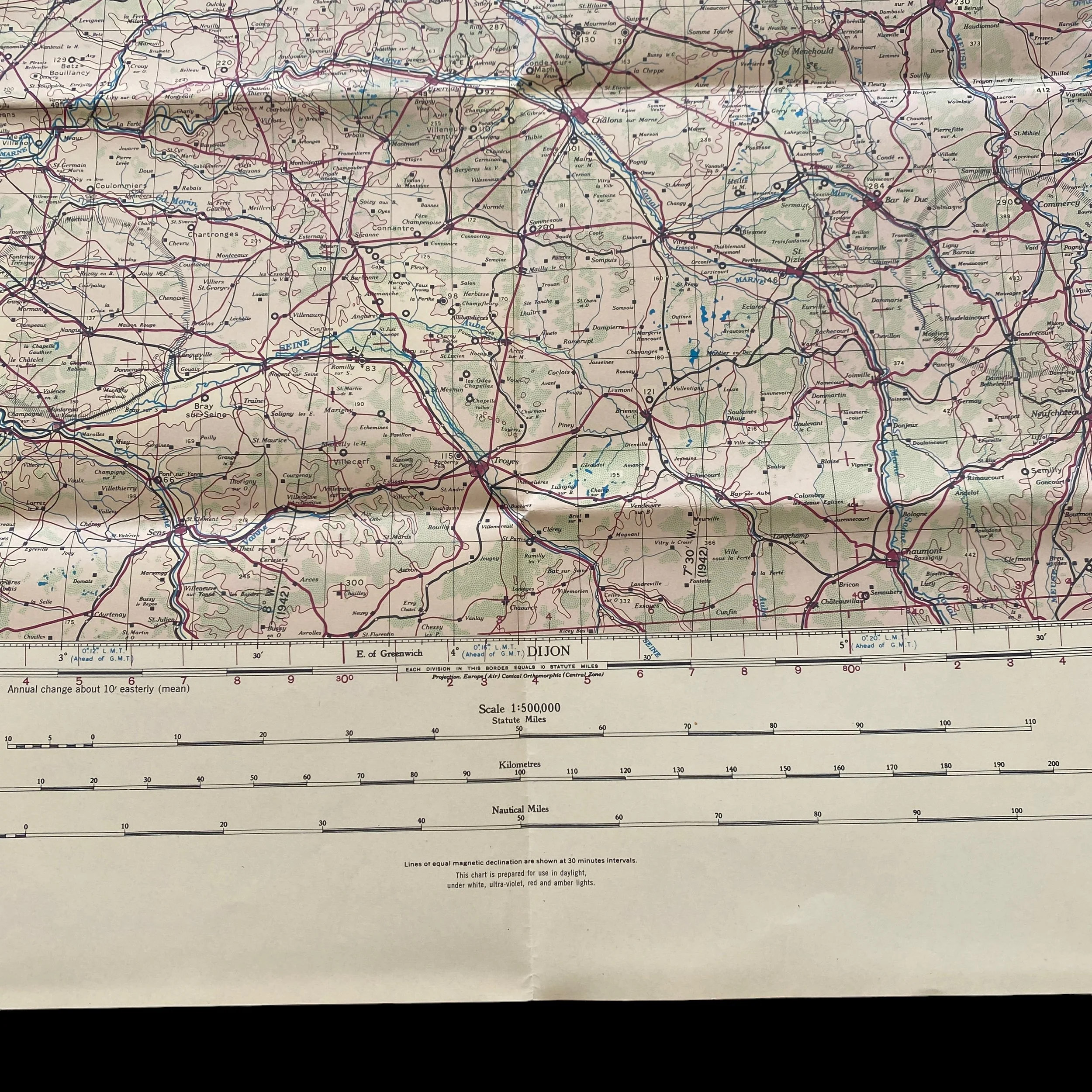WWII Paris France Missions Combat Operations Allied Bombing Map

















WWII Paris France Missions Combat Operations Allied Bombing Map
Comes with C.O.A.
This very rare and museum grade World War II combat operations Allied bombing map titled “Paris” and is dated 1942. The Allied bombing missions on and around Paris, France, during World War II played a significant role in the preparation for and success of the D-Day invasion on June 6, 1944. The bombing campaigns aimed to disrupt German supply lines, damage infrastructure, and weaken the enemy's ability to defend their positions. These missions were not without consequences, as they resulted in significant damage to civilian areas and caused many casualties.
Before the D-Day invasion, Allied bombing missions focused on disrupting German supply lines and weakening their ability to resist the upcoming invasion. Paris, being a major transport hub, was a prime target for Allied bombers. The bombing campaigns began in 1940 and continued until the city was liberated in August 1944. During this time, over 4,000 tons of bombs were dropped on Paris, causing extensive damage to infrastructure and civilian areas. The Germans had anticipated an Allied invasion and had fortified their positions around the city. However, the bombings disrupted their supply lines and weakened their defenses, making it easier for the Allies to penetrate their lines and achieve victory.
During the D-Day invasion, Allied bombing missions were crucial in paving the way for the troops on the ground. The night before the invasion, the Allied air forces dropped over 11,000 bombs on German positions along the coast of Normandy. This bombing campaign aimed to destroy German fortifications and disrupt their communication and supply lines. The bombing was so intense that it was said to have lit up the night sky like fireworks. The success of this bombing campaign allowed the Allied troops to gain a foothold on the beaches and establish a beachhead from which they could launch further attacks.
After the D-Day invasion, Allied bombing missions continued to target German positions around Paris. The Germans, retreating from the advancing Allied forces, often used civilian areas as cover, making it difficult for Allied bombers to distinguish between military and civilian targets. This resulted in significant damage to civilian areas and many casualties. Despite the cost, the Allied bombing missions were successful in weakening German defenses and preventing their ability to regroup and launch counter-attacks.
In conclusion, the Allied bombing missions on and around Paris, France, before, during, and after the D-Day invasion played a significant role in the success of the Allied forces. The bombings disrupted German supply lines, weakened their defenses, and paved the way for the troops on the ground. However, the bombings also caused significant damage to civilian areas and resulted in many casualties. While the decision to bomb civilian areas is controversial, it is clear that the Allied bombing missions were instrumental in achieving victory and ending the war.
This air map is in incredible condition, given its age and would make an amazing addition to any World War II collection.